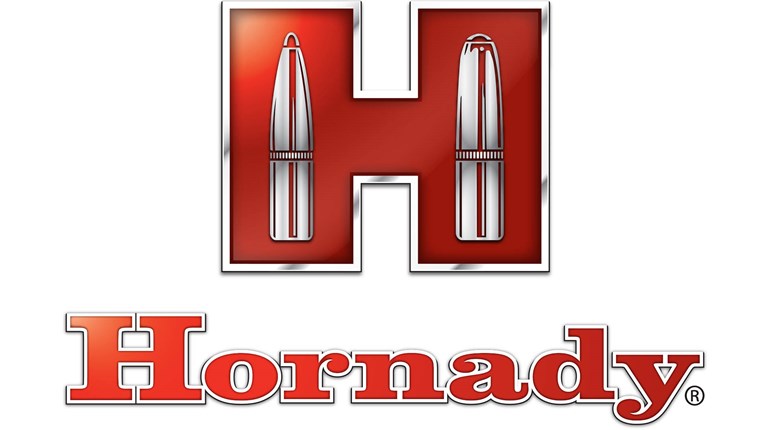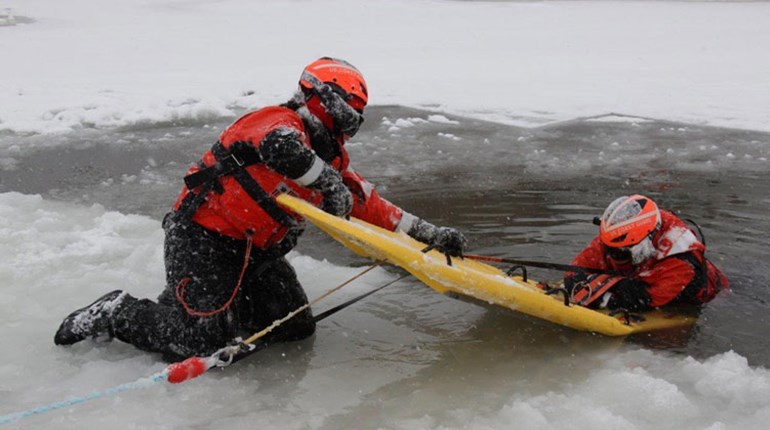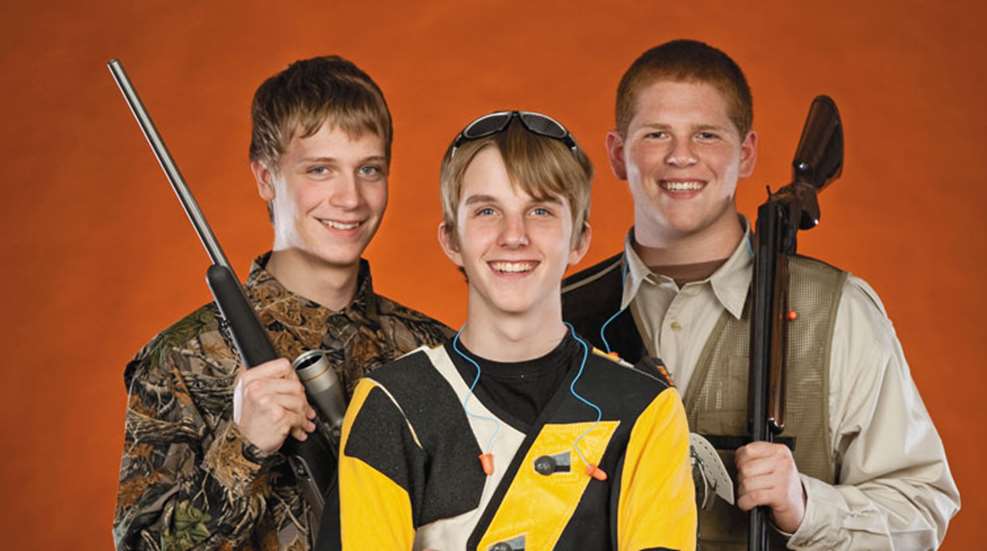
It was a day I’ll never forget, my 12th birthday. I can’t tell you about the cake or gifts I opened, but I can remember the unwrapped present my father walked into the room. He’d worked on it every night for months until it shined like a mirror. The stock and barrel had been shortened and a recoil pad had been added. I still shoot that 7x57mm military-surplus Mauser today.
It wasn’t until I took my prized possession to a range that I realized just how little I knew, aside from the basic safety rules. Everyone was friendly and helpful, and the exciting atmosphere kick-started my gun education that continues to this day. It’s been a lot of fun, but like anything, learning the basic definitions was critical.
In general terms, there are three different types of firearms: shotguns, rifles and handguns (or pistols). Learning how ammunition works will help you understand why each type of gun looks the way it does. When you’ve loaded and made sure it’s safe to shoot, a pull of the trigger lets the firing pin strike the ammunition’s primer. The chemical inside releases enough sparks that the powder ignites, which in turn produces gas as it burns.
Once there’s enough gas pressure built up behind the bullet, slug or pellets, they must move forward out of the shell or brass, ultimately being forced out of the barrel—at speeds that reach hundreds and even thousands of feet per second. It’s a great science lesson every time you take a shot (and cleaning the gun is my kind of homework).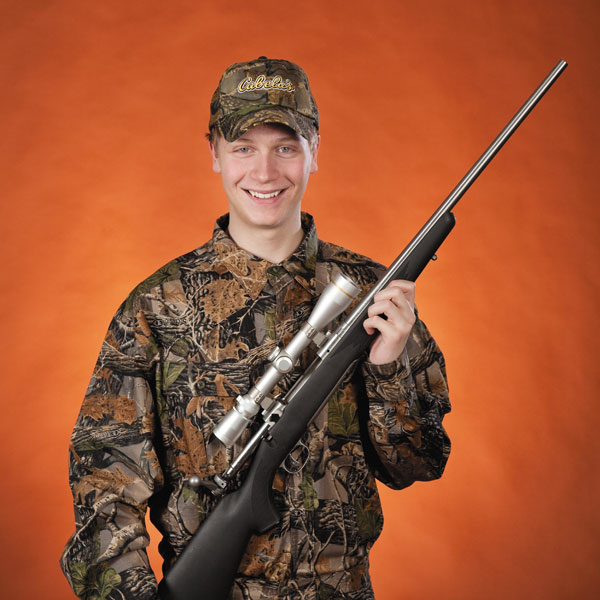
Rifles
If you’re going to shoot targets at long distance or hunt big game, rifles are often the best choice. One of the big reasons is because with every shot some of the powder is forced out of the brass case—right behind the bullet—before it has a chance to burn. However, most of it will light as it travels down the longer barrel, creating even more gas that increases the bullet’s speed. That means more energy delivered to the target.
A rifle also has a wood, synthetic or metal stock you mount on your shoulder to help make it more stable when you’re shooting. Even though you might be able to hold that rifle very steady, when anything—even a bullet—flies through the air, gusts of wind and even humidity can alter its direction slightly. So how does a bullet from a rifle fly relatively straight to a target 300 yards away?
The easiest way to understand is to think about a professional quarterback who throws a pass. He tries to always put a spin on the football to stabilize it in the flight, something the announcers call a “tight spiral.” A bullet is almost exactly the same size as hole in the barrel—and the size of the hole in the barrel determines the caliber of the rifle. If it wasn’t, a lot of the gas pushing the projectile would escape. Because it’s such a tight fit, small grooves inside the barrel—called “rifling”—are made to give a bullet the same type of spin. So a bullet shot from a rifle spins very much like a good pass.
Rifles can be semi-automatic, where some of the energy from your shot is used by a mechanism in the gun to load the next cartridge. Today’s popular AR-15 rifles are a good example. On others, a slide is worked back and forth by the shooter to get rid of the empty hull or brass and load another round. These are called pump actions. In a bolt-action rifle, after a shot is taken a bolt is moved back to get rid of the spent brass. When it’s pushed forward another round is picked up from the magazine and chambered. Single-shot rifles have no magazines to carry extra ammunition. You have to load every cartridge, one at a time.
It wasn’t long ago that we didn’t understand all the chemistry and mechanics it takes to make today’s guns so reliable. So what were they shooting during the Revolutionary War?
Muzzleloaders are still around and are a lot of fun. They are single-shot rifles because you make your own cartridge in the rifle, sort of. First you pour powder or pellets of powder down the barrel. Then you add a cloth called wadding, which makes sure none of the gas escapes as you take the shot. Finally a bullet is started in, and because it fits tightly against the rifling you must ram it on top of the mix until it’s at the bottom of the barrel using a ramrod. Then you’re ready to shoot…sort of.
You still need some way of lighting that powder up, so some sort of primer must be added. In most of today’s muzzleloaders a shotgun primer is inserted in front of the hammer, but a lot of people enjoy using flintlocks—like they did hundreds of years ago—where a mineral is used to generate that spark. 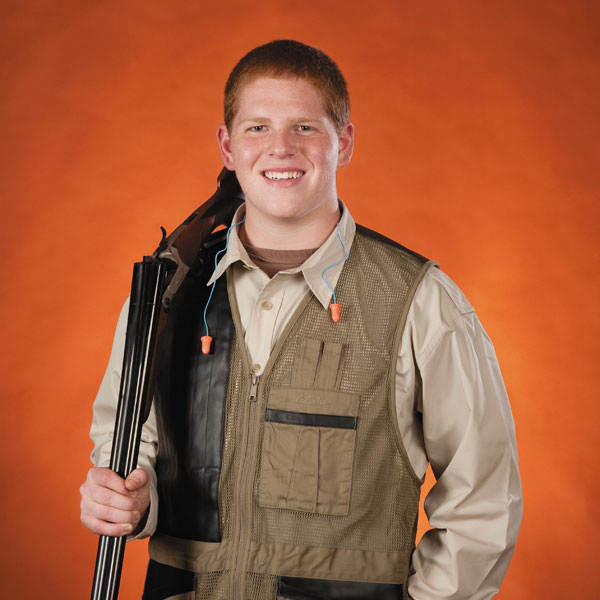
Shotguns
Rifles and shotguns can look alike. They both have long barrels to use as much of the powder’s energy as possible and most shotguns have a stock. So what’s the difference? Shotguns were originally designed for close-range shooting, so only very specialized shotguns have rifling. In fact, rifling wouldn’t do any good in a shotgun because most of the ammunition used in a shotgun, shotshells, contain many small pellets instead of a single projectile, or bullet.
Because the pellets spread as they come out, shotshells are ideal for shooting clay targets, small-game hunting and bird hunting. It would be nearly impossible to hit that clay target with a single bullet, but with a shotgun you have a lot of small pellets to do it for you.
You can find semi-automatic shotguns, single-shots, pumps, bolts and even muzzleloading versions, but there’s more. Sometimes they have two barrels mounted side by side or atop one another. Many of these last two types are used for trap and skeet shooting, but they are also good choices for hunting. With them, you’ll have two shotshells available that have to be manually reloaded, and sometimes you have two triggers.
Shotguns can also shoot a shotshell that delivers a single projectile called a “slug.” Some of the better guns will even have rifling to stabilize it for longer shots. That may sound just like a rifle, but just remember that every shotgun (except muzzleloading versions) uses shotshells that have plastic or paper holding the powder, wadding (the plastic behind the slug or pellets to keep those gases from escaping), and the pellets or slug in one, easy-to-reload unit. They come in three length sizes—2¾, 3 and 3½ inches.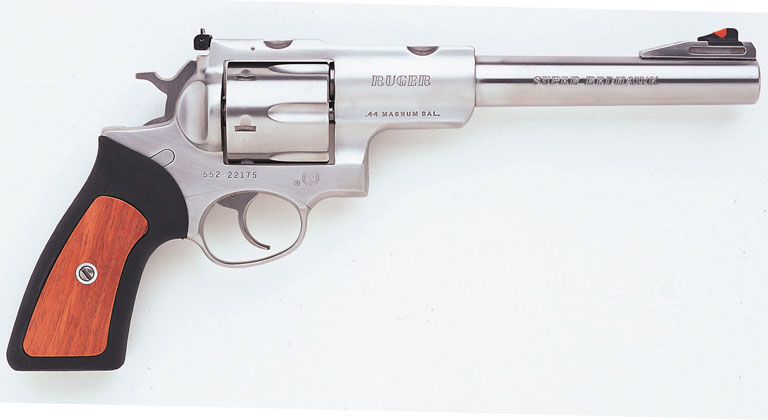
Handguns
With a short barrel and a small grip instead of a long stock, pistols are pretty easy to identify. They too can be semi-automatic and single shot. There are even a few that have a bolt action.
Handguns have a second group, known as “revolvers.” They have a cylinder that rotates—or revolves—to expose a fresh cartridge’s primer to the hammer every time you shoot. When it rotates as you’re squeezing the trigger it’s called double action. If you need to use your thumb to cock the hammer back before squeezing the trigger, it’s a single action. Some revolvers can do both.
Ammunition used in handguns will have metal cases much like those in rifles. They also fire a single bullet and their barrels also have rifling to help in accuracy. Pistols were originally designed for close-range shooting, but people who practice enough can get very good all the way out to 100 yards—sometimes more.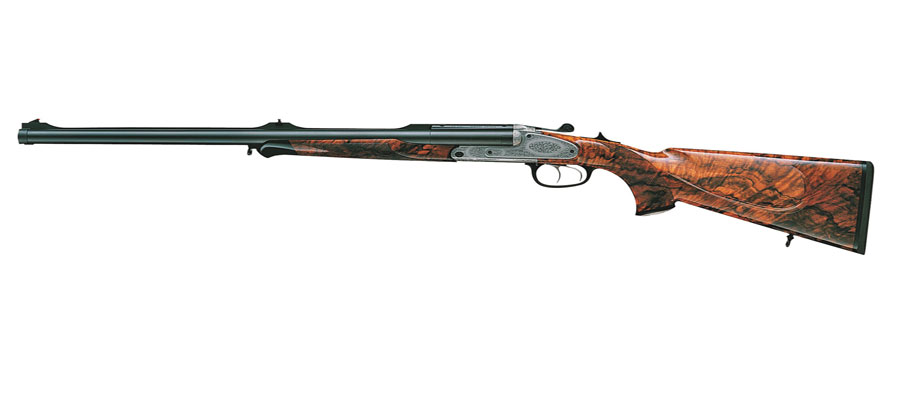
Oddballs and Exceptions
There are always exceptions, like “drillings”. These rifles (sort of) have two barrels. Sometimes one of them is shotgun barrel. Then there are dangerous-game rifles such as the Blaser S2 Safari pictured above, side-by-side big-bore guns designed to take down a lion before it eats you. The list goes on and on and when it comes to gun knowledge, you can learn something new every day.
Technology has confused things even more…and hey, that’s a good thing. The new Taurus Judge handguns have a short barrel and a revolving cylinder, so they’re pistols. But they can shoot both .45 Colt cartridges and .410-bore shotshells.
CVA’s Apex is a single-shot rifle that allows you to easily replace the barrel with a shotgun barrel. When you get bored with shooting skeet, put on its muzzleloading barrel just in time for early deer season. Three guns in one? Add versatile ammunition like CCI’s .22 Long Rifle Shotshells and there’s never been a more exciting time to be a shooter.













